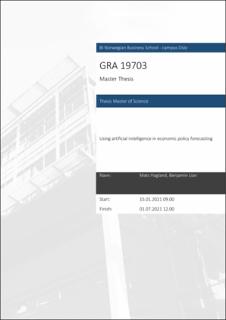| dc.description.abstract | We hypothesize that machine learning algorithms are better equipped at forecasting
policy rates. To test this hypothesis, we gathered several machine
learning algorithms and compared their forecasts of the Norwegian policy rate
against Norges Bank's own forecasts. The hypothesis builds upon the idea of
machine learning as a general tool. Therefore, we tested a broad set of machine
learning algorithms instead of developing a hyper speci c model. The machine
learning algorithms we tested were the elastic net algorithm, the decision tree
algorithm, the long short-term memory neural network, the convolutional neural
network, and an ensemble learner. Consistent with our hypothesis, the
algorithms did indeed exhibit lower prediction errors than the benchmark. A
deeper analysis of the results indicated that this is due to their ability to better
adjust to drastic changes in the economy and that Norges Bank's model
performs better during stable economic periods. | en_US |

